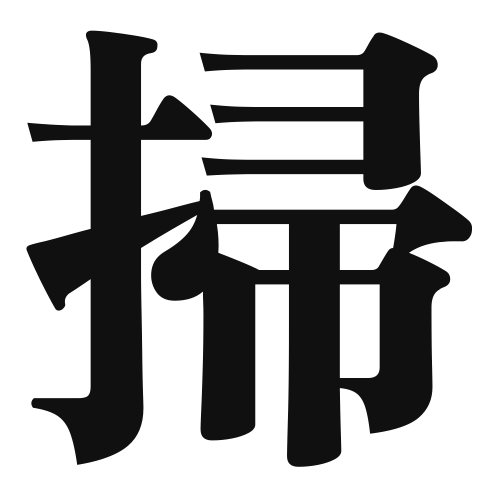1. Overview of Meaning
The kanji 掃 (sō) means “to sweep” or “to clean.” It is commonly associated with the act of tidying up or removing dirt and clutter from a space.
2. Formation and Radical
Formation of the Kanji: The kanji 掃 is a compound character (会意文字) that combines elements to convey its meaning. It consists of the radical for “to sweep” and the character for “to move,” symbolizing the action of cleaning.
Radical: The radical for 掃 is 扌 (the hand radical), which indicates actions performed by hand, such as sweeping or cleaning.
3. Examples of Usage
Common Words and Phrases: Some frequently used words that include 掃 are:
- 掃除 (sōji) – cleaning
- 掃く (haku) – to sweep
Example Sentences in Daily Conversation:
- 毎週末に部屋を掃除します。 (I clean my room every weekend.)
- 彼は毎朝庭を掃く。 (He sweeps the garden every morning.)
4. Synonyms and Antonyms
Similar Kanji: A kanji with a similar meaning is 清 (sei), which means “to purify” or “to clean,” but it often implies a deeper sense of cleanliness or purity.
Antonyms: A kanji with an opposite meaning is 汚 (o), which means “dirty” or “to make dirty.”
5. Cultural and Historical Background
Relation to Japanese Culture: The act of cleaning is deeply rooted in Japanese culture, often associated with the concept of 清め (kiyome), which means purification. Cleaning is seen as a way to bring good fortune and harmony into one’s life.
Proverbs and Idioms: One common saying is 掃除は心の整理 (sōji wa kokoro no seiri), which translates to “Cleaning is organizing the heart,” emphasizing the mental clarity that comes from a clean environment.
